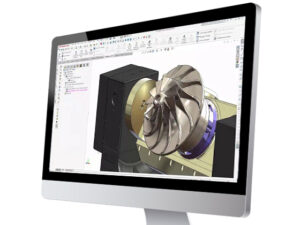Know Where You Stand — and Where to Improve
You can’t improve what you don’t measure. That’s why establishing clear, data-driven baselines is critical.

Why Quality Is Your Best Competitive Advantage
In manufacturing, product quality is more than a box to check — it’s a direct reflection of your company’s identity and values. When you consistently deliver high-quality products on time, you don’t just meet expectations; you build trust, encourage repeat business, and attract new customers through word of mouth. In fact, treating quality as a strategic advantage might be the smartest marketing move you can make.
Here’s why leading manufacturers are doubling down on quality:
- More repeat business. When your products perform better and last longer, customers notice — and they come back, especially in markets where pricing is tight and differentiation is tough.
- Stronger reputation. Nothing spreads faster than a good recommendation. High-performing, reliable products naturally earn you a reputation that opens doors to new opportunities.
- Regulatory peace of mind. In highly regulated industries, quality and compliance go hand in hand. Staying ahead of customer and industry standards not only helps you avoid costly fines but also reinforces customer trust.
- Better control over costs. Quality improvements can directly impact your cost of goods sold (COGS). Fewer defects, less waste, and smoother processes mean more money stays in your business — not tied up in rework or returns.
So how do you make quality your competitive edge?
Build a Quality-First Culture That Actually Works
Creating high-quality products starts with creating a quality-focused culture — one where every employee understands their role in delivering excellence and feels empowered to act on it. When quality becomes everyone’s responsibility, it stops being just a checklist and starts becoming a competitive advantage.
Here are six proven ways manufacturers are building a culture where quality thrives:
- Put quality ahead of cost-cutting. Yes, managing costs is critical — but if it comes at the expense of quality, you’re setting yourself up for rework, returns, and reputational damage. Leadership should be just as vocal about quality goals as they are about budget targets.
- Make quality a C-level priority. Assigning a senior executive to own quality sends a powerful message: this matters. It also ensures someone has the authority to remove roadblocks, streamline processes, and make the tough calls needed to improve.
- Empower cross-functional leaders. Quality doesn’t live in a silo. Leaders from production, finance, customer service, and beyond all need a say — and the power — to make meaningful changes in their areas. True ownership drives real accountability.
- Rethink governance through a quality lens. Who’s making the decisions around quality — and are they the right ones? Consider redefining governance structures so that quality has a seat at every table, and even establishing a dedicated executive role focused solely on it.
- Let go of what’s not working. If outdated procedures are slowing you down or dragging down standards, it’s time to rethink them. Sticking with ineffective practices only fuels mediocrity — and prevents progress.
- Celebrate wins, big and small. Recognition goes a long way. Sharing quality metrics on dashboards in common areas or creating a “Quality Champions” program are great ways to keep momentum high and employees engaged.
Building a culture that prioritizes quality isn’t an overnight task — but it’s one of the most powerful long-term investments you can make. When every person on the floor, in the office, and across departments sees how their role contributes to excellence, quality becomes more than a goal. It becomes part of your DNA.
Make Quality Part of Your Digital Infrastructure
To turn quality into a competitive edge, you have to bake it into the systems that run your business.
That means integrating quality management with your ERP, MES, and other platforms like accounting, supply chain, and procurement. With systems like DELMIAWorks that speak the same language, you get a 360-degree view of how quality impacts performance, costs, and delivery.
System capabilities like:
- Real-time data sharing across production and finance
- ECO and RMA tracking linked to materials and production runs
- Supplier scorecards, audits, and quality-based purchasing decisions
- Tailored CAPA workflows and tooling audits
- EDI automation to eliminate manual errors and speed communication
When quality insights flow across your business systems, every decision becomes more informed — and more impactful.
Final Thoughts
There’s never been a better time to invest in quality. When integrated into your systems and culture, quality doesn’t just reduce risk — it drives smarter decisions, stronger performance, and greater customer loyalty.
With the right tools and mindset, quality isn’t just something you manage. It’s how you win.
For more technical detail and a real-world example from R.E. Darling, a specialty plastics company that’s supported missions ranging from early NASA flights to modern aerospace defense, check out the whitepaper.
Share
Meet the Author

